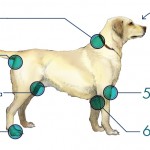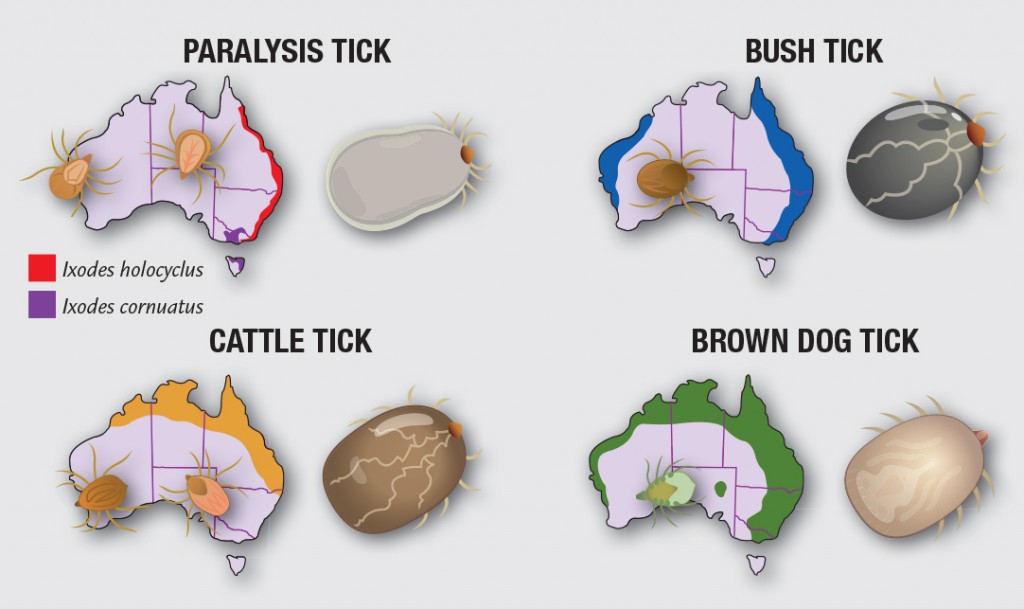Ticks represent direct harm to both humans and pets. TheyŌĆÖre extremely small (usually only a couple millimetres in size), making them hard to see. Even if theyŌĆÖre biting you, theyŌĆÖre difficult to detect, as they secrete an aesthetic into their host before latching on. If this happens, the tick may cause a skin irritation or allergic reaction, possibly alerting you to their presence a few days after youŌĆÖve been bitten.
Ticks also transmit a wide variety of pathogens, most notably Lyme Disease, Human Monocytic Ehrlichiosis, or Southern Tick-Associated Rash Illness. Fortunately, Lyme Disease is extremely rare in Australia as itŌĆÖs transmitted by Ixodes scapularis, a tick that is rarely encountered in the Country.
Controlling Ticks Externally
The best way to control ticks in your gardens is to ensure proper lawn maintenance. Regularly mowing your lawn and keep it short. Ticks love shady, moist, and quiet, undisturbed areas. Mowed lawns allow for better drainage and evaporation, depriving ticks of the water they need to survive. Further, short grass exposes ticks to both the sun and predators like birds, both of which kill ticks effectively. In addition to mowing, keep your yard free of fallen leaves and dead brush, and neatly stacking firewood in a dry place to avoid creating dark, damp hiding spots.
Need help keeping ticks off your property? Australian Pest Specialists services can remove ticks, and other pests, from your lawn and landscaping. Check out our Pest Control services.
Indoor Tick Control
Ticks generally donŌĆÖt live indoors, but if you live an active indoor/outdoor life or have pets, it can happen – generally found in your clothing and linens. You can take care of this by minimizing piles of dirty laundry and washing your outdoor clothing immediately. As with most bugs, there are also a variety of indoor pesticides and professional treatments around that can kill ticks effectively.
While theyŌĆÖre happy to hitch a ride on just about any warm-blooded creature, the most likely way a tick would find its way into your home is on the back or belly or legs of an indoor-outdoor pet.
Keeping pets Tick Free
 Unfortunately, if you have a furry friend, that very fur is one of the factors that makes them vulnerable to ticks. Ticks use fur as makeshift shield as they burrow into your petŌĆÖs skin. If your pet spends time outdoors and then it carries a substantial vulnerability to tick bites and you should certainly keep a close eye out for tick hitchhikers. The good news is, there are plenty of effective solutions for this particular problem. Anti-tick shampoos and sprays work well to eliminate an acute tick problem, but these remedies donŌĆÖt cover your pets in the long-term and may even cause skin irritations. Tick-preventative collars and medicines are generally highly effective and long-lasting. Be sure to consult with your veterinarian to find the right treatment for your pet.
Unfortunately, if you have a furry friend, that very fur is one of the factors that makes them vulnerable to ticks. Ticks use fur as makeshift shield as they burrow into your petŌĆÖs skin. If your pet spends time outdoors and then it carries a substantial vulnerability to tick bites and you should certainly keep a close eye out for tick hitchhikers. The good news is, there are plenty of effective solutions for this particular problem. Anti-tick shampoos and sprays work well to eliminate an acute tick problem, but these remedies donŌĆÖt cover your pets in the long-term and may even cause skin irritations. Tick-preventative collars and medicines are generally highly effective and long-lasting. Be sure to consult with your veterinarian to find the right treatment for your pet.
How to Deal with Tick Bites
 If you discover you have a tick, try to get it out as quickly as possible. If you spend a significant amount of time outdoors, we recommend scanning yourself and your loved ones for ticks at the end of each day.
If you discover you have a tick, try to get it out as quickly as possible. If you spend a significant amount of time outdoors, we recommend scanning yourself and your loved ones for ticks at the end of each day.
If you find a tick, remove it immediately. HereŌĆÖs a step-by-step guide for pulling out tips
ŌĆó Using a clean, fine-tipped pair of tweezers, grasp the tick as close to your skin as possible
ŌĆó Applying steady and gentle pressure, pull outward from your skin. Do not twist or jerk the tick, as this could dislodge the tickŌĆÖs body while leaving the mouthparts in your body. Also, take care not to puncture or crush the tick, as its fluids may be infectious.
ŌĆó If you do separate the body from the mouth, itŌĆÖs okay. Try to remove the mouth after cleaning the tweezers, and if itŌĆÖs not doable, leave it alone and clean the skin.
ŌĆó Kill the tick by submerging it in alcohol, or flushing it down the toilet. If possible, try to preserve the dead tick in a ziplock bag so it can be identified if you develop symptoms.
ŌĆó Thoroughly clean the bite area with rubbing alcohol or soap and water.
ŌĆó If you develop a rash or fever, consult a doctor.



